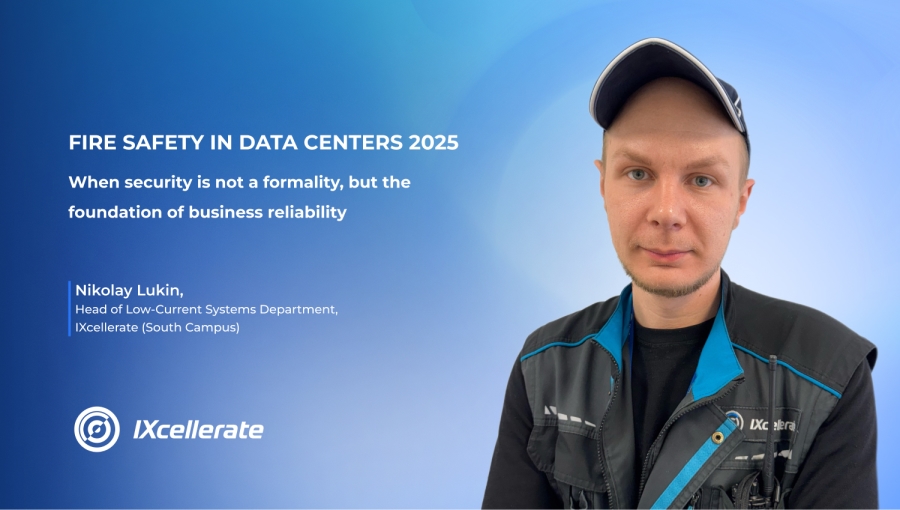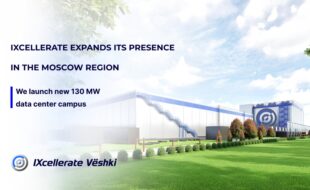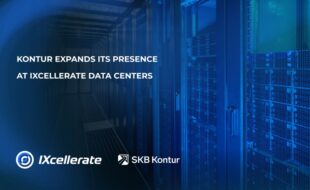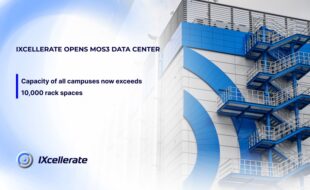
Fire safety in a data center is a strategic task that directly affects business continuity. Modern data centers are complex technical facilities with high computing density, round-the-clock operation and multiple engineering systems.
In the latest issue of the catalog “Fire Safety – 2025” Nikolay Lukin, Head of Low Voltage Systems team at IXcellerate South Campus, presented the main principles underlying the architecture of fire protection of data centers. In this article we will tell you more about IXcellerate safety system – not as a set of technical means, but as an integrated engineering environment, built taking into account the specifics of the facility, international requirements and high reliability tasks.
Basic principles: safety is built in at the project stage.
Fire protection starts with a competent design basis. All engineering solutions are developed in strict compliance with the Code of Regulations of the Ministry of Emergency Situations and international standards. In case of necessity to determine special technical conditions for the facility, taking into account its peculiarities and providing the necessary level of data center security.
Design documentation is subject to expert review and approval by the fire supervision authorities. In preparation for commissioning of the facility, we conduct briefings, drills, create evacuation schemes and develop internal regulations for actions in case of emergency. Such safety architecture covers both technological and organizational circuits.
Equipment and technologies for fire protection systems in IXcellerate are selected according to a number of strict criteria. The basis is the speed of fire detection, modularity of architecture, redundancy of components, flexibility in adaptation of algorithms, compatibility with other engineering platforms. All solutions must be ready for scaling and modernization without changing the core infrastructure.
Detection and extinguishing system: intelligent defense.
IXcellerate fire safety system works on the principle of addressable control. Modules with redundant components combine signals from several types of detectors – smoke, heat, flame. The solution algorithm is triggered only when the specified combinations of sensors are triggered. This eliminates false alarms and ensures localization of the hearth with high accuracy.
As part of colocation services, our company places customers’ IT infrastructure in the data center’s machine halls and provides a choice of automatic fire extinguishing systems. In IXcellerate we use both gas and water fire extinguishing, while giving preference to systems with high-pressure finely atomized distilled water. And for good reason:
- localized effect: unlike gas systems, the fine mist is delivered strictly to the hearth area without filling the entire volume of the machine room;
- minimal consequences in case of false alarms: the cost of remediation is many times lower;
- environmental and operational safety: water is not dangerous for personnel, does not require complicated storage and ventilation conditions;
- Flexibility in integration: these systems can easily adapt to changes in the data center infrastructure.
At the same time, we retain the option of using gas extinguishing, especially in rooms with particularly sensitive electronics, where the use of TRVs is undesirable.
Structural measures: engineering and fire resistant materials.
Fire safety of IXcellerate facilities is ensured in a comprehensive manner. Fire-resistant materials and special cable systems preventing the spread of fire are used during construction. High-load areas are protected structurally – by fire partitions, cutoffs and fireproof entries.
Water-air cooling technology is used to maintain temperature control in high-density racks with loads of 55 kW and above. Fluid is delivered directly to heated components, providing efficient heat dissipation and reducing the likelihood of overheating, a key risk factor in data centers.
Digital monitoring: AI as part of response systems.
With the development of artificial intelligence, smart monitoring elements are being actively integrated into fire safety systems.
Artificial intelligence algorithms are also partially integrated into the structure of IXcellerate fire protection solutions. They can analyze video streams from CCTV cameras, data from various sensors in the monitoring system (temperature, humidity, gas concentration) and other parameters in real time. This will allow anomalies (e.g., unusual thermal radiation in the early stages) to be detected before they become a threat. This approach can increase the speed of response and reduce the workload on operators.
AI is also used to simulate scenarios for staff training, which helps to practice what to do in different situations and improve staff training.
Technical control and operational discipline.
IXcellerate data center security is maintained through regular inspections and maintenance. We conduct thermal imaging inspections of equipment, UPS and distribution boards, routine testing of detectors and primary fire extinguishing equipment. The team also undergoes regular training and practical drills on evacuation, smoke alarms and manual extinguishing equipment.
Scenarios and procedures are revised based on the analysis of real-life events, including industry cases. For example, the OVHcloud data center incident in 2021 signaled an industry-wide push to strengthen practices around redundancy, system resilience, and structural fire resistance. We learned important lessons from it:
- testing and maintenance must not be delayed;
- constant thermal imaging monitoring of key nodes from UPS to distribution boards is required;
- It is critically important to regularly check the operation of manual and automatic systems.
Conclusion.
Fire safety in IXcellerate is not a set of isolated solutions. It is a multi-layered structure that combines design principles, technological expertise, architectural solutions, digital control and organizational discipline. This approach helps ensure stable infrastructure performance, resilience to emergencies and customer confidence.
We view each system element as part of a single engineering ecosystem and build data centers where security becomes an internal quality standard.



